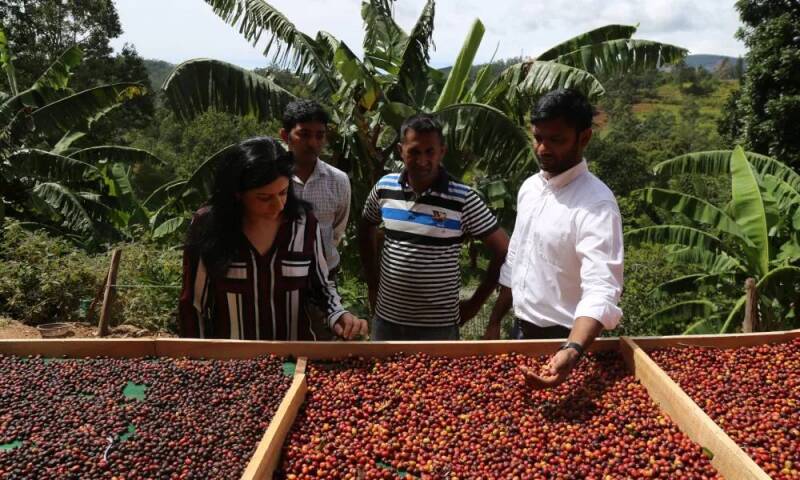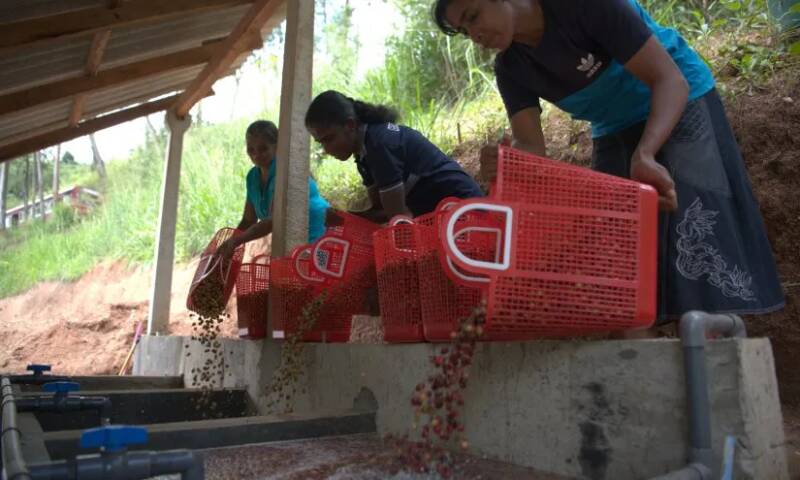Sri Lankan coffee planting area increases, more coffee exports in the future
Sri Lanka is an island country located in the Indian Ocean south of the South Asian subcontinent, rich in agriculture, forestry, fishery and hydropower resources. The country is dominated by plantation economy, with tea, coconut and rice as the main crops. The locally produced Ceylon black tea is also known as "one of the three black teas in the world".
Although Sri Lanka's industry is mainly tea, this has been driven by decades of government investment and policies aimed at the infrastructure and development of tea production. However Sri Lanka's history as a coffee-producing country favorable geographical conditions and high-altitude central highlands laid the foundation for the review of Arabica's farming industry.
At present, Sri Lanka's coffee production and exports are still very low, but are growing significantly. At the beginning of this century, only 4690 hectares were used for coffee production, but the government plans to expand to 5263 hectares by 2025.
The Market Development Fund (MDF) has been working closely with the Sri Lankan coffee industry since 2017 to promote growth plans and support its coffee cultivation. The Market Development Fund (MDF) is a multinational initiative funded by the Australian Department of Foreign Affairs and Trade for sustainable economic development in the entire Pacific region, including Sri Lanka. As a result, according to MDF estimates, Sri Lanka's coffee production has doubled over the next five years. With the development of the coffee industry in Sri Lanka, the Lanka Coffee Association (LCA) was established in 2021. The first National Coffee Festival was held in 2022, followed by the second Coffee Festival in 2023.

Because Sri Lanka's mountainous geography and warm climate create an ideal growing environment for growing Arabica, and the global demand for coffee is growing. These are one of the reasons why Sri Lanka wants to return to coffee production and focus on quality and the coffee market. However, in Sri Lanka, there has been a century of tea development, ignoring the development of the coffee industry, so it is necessary to make structural and systematic improvements in coffee cultivation, coffee quality and processing.

To further support the development of the coffee industry in Sri Lanka in the future, MDF has developed a guide to invest in the coffee industry in Sri Lanka in four key areas. First of all, expand coffee farms and turn some abandoned tea gardens into coffee farms. There are also expanding the network of small farmers and increasing exchanges within the industry. Develop coffee processing to achieve better quality control. Finally, there is the introduction and improvement of the barista training program. Sri Lankan baristas need better training and skills upgrading to bring Sri Lankan coffee to the global stage and increase exposure by participating in the international barista competition.
Since about 80% of Sri Lanka's coffee beans come from small farmers across the country, it is difficult to manage, but the Sri Lankan government is confident and stepping up efforts to develop the coffee industry. More coffee from Sri Lanka will be seen in the international coffee market in the future.
Disclaimer: some of the pictures in this article come from the network, and some of the contents of the website, such as pictures, we will respect the origin of the original copyright, but due to the large number, there will be individual pictures and texts not in time to indicate, please forgive me. If the original author has any disputes can contact the website to deal with, once verified, we will immediately correct, by "Ka comment vdailycom" collation and editing, reprint please indicate, this article is intended to spread coffee culture, if infringement, please inform to delete, thank you ~!
Important Notice :
前街咖啡 FrontStreet Coffee has moved to new addredd:
FrontStreet Coffee Address: 315,Donghua East Road,GuangZhou
Tel:020 38364473
- Prev

Bathroom matching can also make the coffee shop out of the circle!
▲ Click to follow | Daily boutique Coffee Culture Magazine Coffee Workshop Coffee lovers should know that coffee is not only refreshing, but also helps defecation. I don't know since when, the bathroom has become one of the criteria to measure whether a coffee shop is comfortable or not. Recently, a netizen from Shandong is on the social platform.
- Next

Fei Xiang came to Starbucks with red socks? Aesthetic is becoming more and more approachable!
▲ Click to follow | Daily boutique Coffee Culture Magazine Coffee Workshop with the arrival of the Christmas season, many friends found that Daddy Xing's coffee package was fully dressed in red and almost didn't recognize his takeout. When the somatosensory temperature gradually enters the winter, in order to echo the holiday theme, Starbucks' new Christmas coffee will also be in Ming.
Related
- What ratio of water temperature and ground does the smart cup method use to press coffee? The difference between brewed coffee and filtered coffee?
- What is the standard process for the purpose of coffee cup testing? What is the difference between hand-brewed coffee and cup testing?
- How to use hand-brewed coffee paragon small golden balls? How does cold coffee lock in the aroma of coffee?
- Is American coffee black? What is the difference between American coffee and drip coffee?
- Unexpected! Well-known tea beverage brand Lele Tea will withdraw from the Zhengzhou market!
- Starbucks enters the fashion and beauty industry?! Netizen: Give me an ice American eye cream
- Why can American refills for free? The difference between Americano and American drip pot coffee
- Being chased out of the rain in front of Starbucks?! Store: Sheltering from rain under umbrellas poses a safety hazard
- The white moonlight has changed?! Lucky launches "Big Winter Pear American"
- Hand-brewed coffee three-stage method, high-sweet and universal brewing method to share! What does the high sweet water level of hand-brewed coffee mean?

